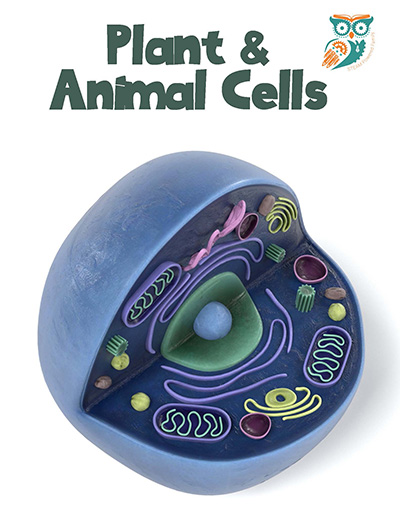Build a Cell Model and Lesson
Did you know that every single living thing is made up of teeny, tiny unit structures? You have more than 75 trillion of them in your body – they’re called cells and they are amazing! Today we are exploring the fascinating world of cells including learning all the parts of the cells, the similarities and differences between animal cells and plant cells, then we will learn how to build a plant cell model and an animal cell model. This helps students visualize the parts of the cell up close. The perfect science and biology lesson for the classroom.
Animal and Plant Cell Model Project
Disclaimer: This article may contain commission or affiliate links. As an Amazon Influencer I earn from qualifying purchases.
Not seeing our videos? Turn off any adblockers to ensure our video feed can be seen. Or visit our YouTube channel to see if the video has been uploaded there. We are slowly uploading our archives. Thanks!
What are Cells?
A cell is the tiniest thing that still has all of the properties it needs to live. Some tiny, tiny living things like bacteria have just one cell. Human beings are made up of between 30 and 40 trillion cells – that’s right TRILLION. So you can imagine how tiny these cells have to be to fit that many inside your body. Cells are the building blocks of your entire body. Cells are tiny but inside that tiny structure are more tiny structures, and different cells have different functions to make your body work the way it needs to. So let’s learn more about cells!
The Differences Between Animal Cells and Plant Cells
I know you’re still trying to visualize all of those cells dancing around in your body – but did you know that plants have cells too? There are lots of ways these cells are the same, but there are important ways they are different.
Just like our heart and brain and kidneys all have a specific job all of the parts of a cell have a different job – these parts of the cells are called organelles.
Plant and animal cells have a lot of similar organelles and then some that are specific to each type of cell. Let’s explore cell organelles.
Parts of the Animal Cell
First, here is a diagram showing the parts of the animal cell so you can visualize the cell. Remember these cells are really tiny, and these parts even smaller. You will need a very powerful microscope to see these parts of the cell.
Parts of the Plant Cell
Now compare that animal cell to this plant cell. Can you spot the differences? What is the same?
Read on to learn more about the similarities and differences between Plant Cells and Animals Cells. Then we will build our own cell model.
How are Animal Cells and Plant Cells the Same?
Both Animal and Plant Cells have a nucleus – this is the powerhouse of the cell where all of the genetic information is stored (chromosomes and DNA). Inside of the nucleus in both plants and animals we find a nucleolus – this is the core of the nucleus and its job is to produce ribosomes.
Animal and Plant Cells have cytoplasm – this is all of the fluid in a cell but not inside its nucleus. Chemical reactions that happen in a cell, happen in the cytoplasm.
Both Animal and Plant Cells have ribosomes – a ribosome’s job is to synthesize proteins.
Both animal and plant cells have mitochondria. This is the true powerhouse of any cell. The mitochondria produce energy for the cells!
Both animal and plant cells have endoplasmic reticulum. This membrane helps form networks, and synthesize proteins and lipids.
Both animals and plants have a Golgi Apparatus which helps grow and transport proteins.
Both animals and plants have lysosomes. This organelle is basically the recycler of the cell and is filled with digestive enzymes.
Both animal and plant cells have vesicles. Vesicles move materials that are an organism for survival and they are used in waste recycling.
Both animal and plant cells have a cell membrane – this basically just holds everything together and protects it. But there are some differences. More on that in a second.
Both animal and plant cells have vacuoles which control water. There are differences between Animal and Plant cell Vacuoles, which we will explore in a moment.
How are Plant and Animal Cells Different?
Plant cells have a different structure than animal cells. Looking at an animal cell and plant cell side by side the most striking difference between animal and plant cells is their shape – an animal cell is more circular where a plant cell is squared off. This is because a plant cell has a cell wall surrounding its cell membrane and an animal cell doesn’t. This is specific to plant cells and gives them protection from the outside environment.
Vacuoles – although a plant vacuole is much bigger than an animal vacuole. This is because the vacuole helps the plant to maintain its water levels. Animals have more control over their water levels so the large central vacuole is unnecessary.
Another part only found in plants is chloroplast. Chloroplasts conduct photosynthesis which is what gives plant cells their energy and produce chlorophyl which gives plant leaves their colours. Want to do an experiment exploring chlorophyl? Try a Leaf Lab.
Animal Cells have centrioles – these are paired barrel-shaped organelles that help organize when it’s time to divide, a process called cell division.
Although both animal and plant cells have chromosomes, plant cells possess fewer chromosomes than animal cells. Chromosomes are made up of DNA. Segments of DNA in specific patterns are called genes. You can learn more about DNA in our DNA model project or Strawberry DNA extraction experiment.
How To Build An Animal Cell Model and Plant Cell Model
To get a better feeling for what these cells look like we can have students draw and label the parts of each type of cell. You can use our diagrams earlier in this article to inspire their own drawings.
If you want to go a little more in depth try making a felt model of each type of cell. I love using felt for a project like this for a few reasons – it comes in tons of great colors, it is relatively inexpensive and the felt kind of adheres to itself so that you can put the elements in place without them sliding all over like paper might. However, if you don’t have felt, you can use construction paper.
Depending on the ages of your students you can cut out all of the elements and have the students assemble them or you can give the kids the different colors and have them create their own.
Here is our Animal Cell Model with labels
Here is our Plant Cell Model with labels
Once the cell models are assembled have the students label all of the parts. This is a nice, visual project with minimal mess that is easily put aside for additional study later on. Or glue them together to create a wonderful, colourful wall display of cells!
Extension Activities and Printables
Looking to do even more with cells in your lesson? We have a printable Plant and Animal Cells lesson available in the STEAM Powered Family Shop.
You can also get hands on with exploring animal cells with this egg in vinegar experiment that includes a dissection element learning about the parts of the cell.
Enjoy getting hands on with cells!









